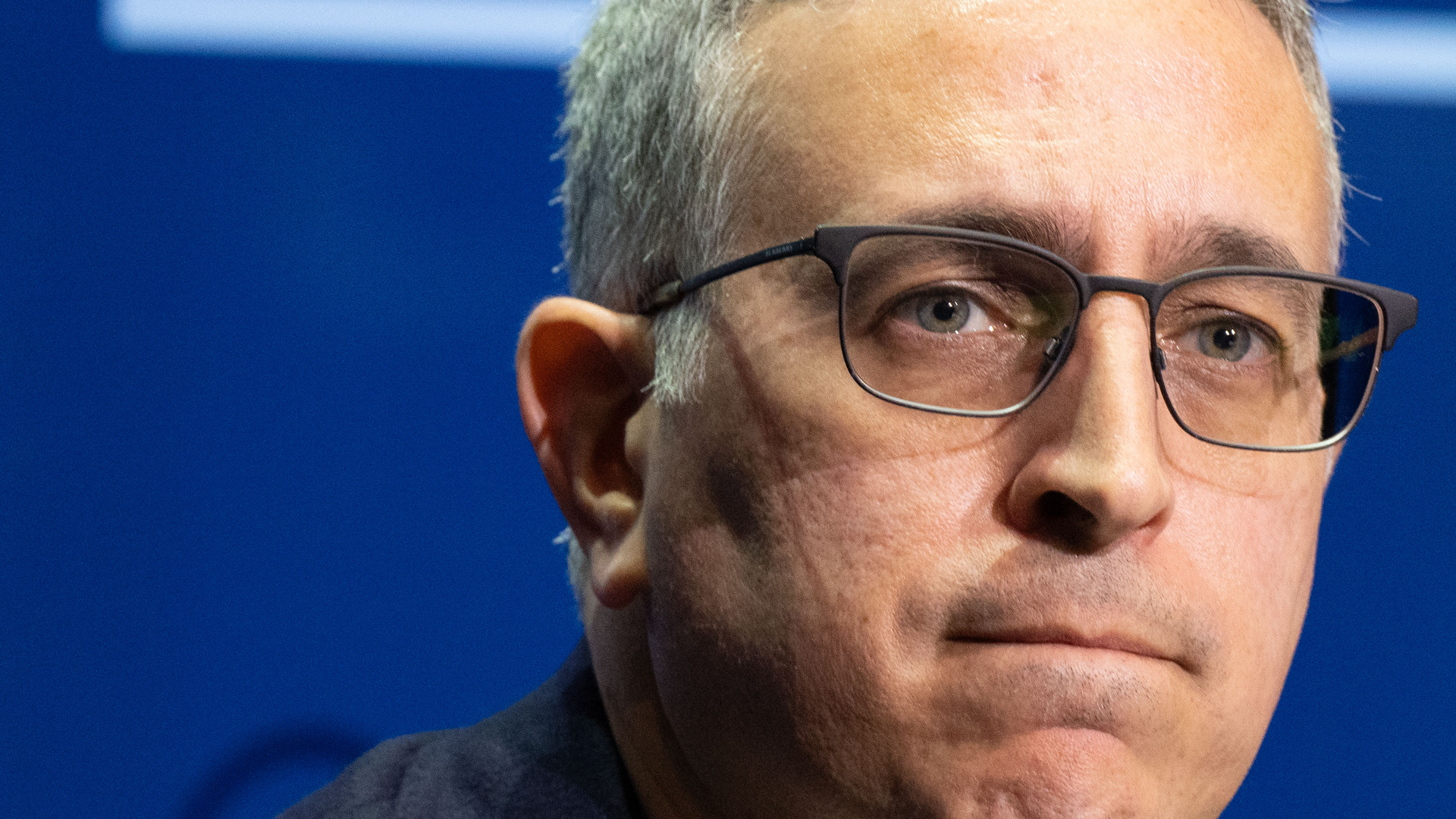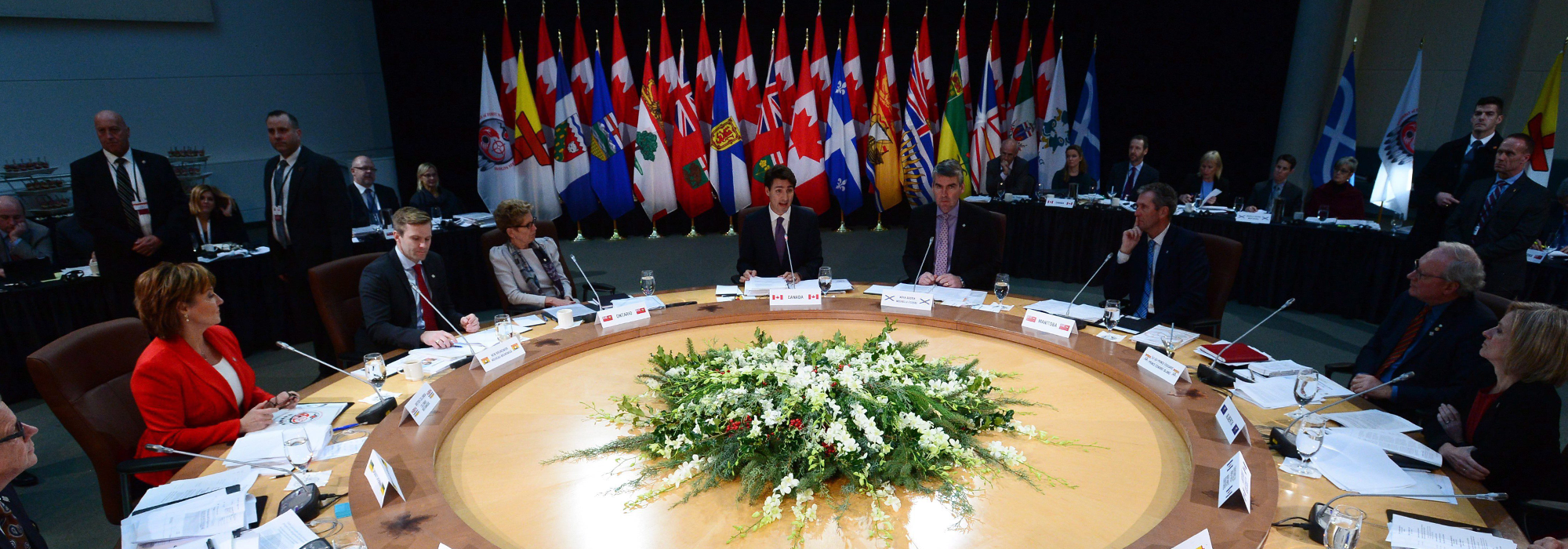
The agreement signed between Ottawa and eight of the provinces to establish a national framework to price greenhouse gas (GHG) emissions is an achievement. The merits of the plan – essentially whether it is too tough or not tough enough on emitters – will be debated for some time. But, the agreement does set out a path for Canada to meet its international obligations under the Paris Agreement (to reduce emissions by 30 percent from 2005 levels by 2030).
The real achievement of Friday’s meeting between the Prime Minister and his provincial and territorial counterparts, however, was that they were able to reach an agreement at all. The environment and regulating GHG emissions is one of the most difficult and complex policy files in federal-provincial relations today. The challenges are exemplified by the refusal of Saskatchewan and Manitoba to sign the deal.
What this agreement demonstrates is both the promise and peril of Canada’s contemporary brand of federalism. It also reveals Prime Minister Trudeau’s preferred approach to dealing with the provinces.
At its core, this “Pan-Canadian Framework” is a multi-year plan to set a national floor on the price of carbon. A coordinated federal-provincial approach is needed because the provinces have the bulk of constitutional authority to regulate the key economic activities that produce GHG emissions. And so, we have a patchwork of different approaches and plans to regulate emissions and price carbon; for example, a direct pricing model (a carbon tax) in British Columbia and a cap-and-trade model in Ontario and Quebec. What this agreement does is establish a framework to coordinate these various mechanisms and set an equivalent minimum price on carbon across the country (starting at $10/tonne of GHG emissions in 2018, rising by $10/year until it reaches $50/tonne in 2022).
The agreement stems from months of multilateral federal-provincial-territorial negotiation and consultation with Indigenous peoples and stakeholders. The negotiations were informed by a series of principles that seek “fair and flexible approaches” to pricing carbon that balance a recognition of the provincial actions already taken with the need for a consistent minimum price on emissions across the country. This approach and outcome to federal-provincial negotiation is the core of a “collaborative” approach to federalism.
At the same time, the federal government took a rather hard line to incentivize an agreement on a national climate change strategy. Trudeau let everyone know he will act unilaterally to achieve his national policy goals here: the federal government will impose a carbon pricing scheme for those provinces that do not sign on to the deal and implement their own model by 2018 (right now, this would be Saskatchewan and Manitoba).
This combination of promoting policies with strong pan-Canadian goals while showing a measure of flexibility to account for regional and provincial interests is emerging as Trudeau’s preferred approach to federalism. In addition to the climate deal, a similar approach has been telegraphed for health care (signalling that additional investments in the system may be attached to specific policy goals set by the federal government). Finding a consensus among the provinces on enhancing the Canada Pension Plan (a Liberal election promise) also comes to mind. The recent appointment of Justice Malcolm Rowe to the Supreme Court of Canada maintained the convention of regional representation despite the initial focus on bilingualism, reflecting the diversity of Canada and an open application process.
These examples show a strategy that breaks from former prime minster Stephen Harper’s preferred approach of “open federalism,” while also revealing an important truth about Canadian federalism.
Harper came to power in 2006 with a new vision of federalism, whereby the federal and provincial governments were left alone to work in their own areas of responsibility. Indeed, Harper only met his provincial counterparts en masse twice over a decade. Paired with this view was an openness to take unilateral action to achieve national goals, rather than banging out messy negotiated agreements.
However, as I show in an IRPP study (with Andrew McDougall and Grace Skogstad), despite Harper’s general desire to disengage from the provinces, there was a surprising level of federal-provincial collaboration during his tenure. In key areas like agriculture, immigration and labour market policy, multilateral federal-provincial agreements were struck that sought to balance national and provincial interests. The civil service and ministers tended to drive these initiatives (not Harper). But, even when key federal government policies were initiated through unilateral action, Ottawa was often pulled back into negotiations with the provinces to actually implement its policies. We saw this, for example, in the case of the Canada Job Grant, where the initial version was introduced without provincial consultation but was in the end shaped by subsequent federal-provincial negotiations. In these areas where we saw collaboration with provinces, the key was that there were already well-established ideas of the federal and provincial roles and a complex set of institutions and processes (such as ministerial and bureaucratic committees) to negotiate policy development.
This is the truth of Canadian federalism that seems also to be shaping Trudeau’s approach to federalism: the ideas and institutions of federal-provincial relations that have been established over the last 150 years clearly shape the available options for federal and provincial governments to realize their policy objectives. Over time, ideas about the respective roles of the federal and provincial governments have developed that have to be taken into account by actors on both sides when they are seeking to develop and implement new policies. For example, as we show in our IRPP study, there is an emerging, shared understanding that the provinces play an important part in the selection and settlement of immigrants, but that the federal government still has a critical leadership role to ensure the immigration system reflects pan-Canadian interests and objectives. And the idea that both the federal and provincial governments have a shared responsibility for the immigration system has informed the development of a host of multilateral federal-provincial committees and agreements to manage the policy field together.
The process of negotiating and the end result of the climate pact reveal similar understandings of the federal and provincial roles in environmental regulation. What we can take from this is that Trudeau’s desire to make headway on national policy goals in the interests of all Canadians requires working with the provinces, territories, Indigenous peoples and stakeholders. This was not the starting point of Harper’s approach to federalism, but eventually a reluctant collaboration seemed to emerge during his tenure in some key areas.
The perils of this reality are clear. The difficulty of reaching a common approach that knits together the complex patchwork of approaches to GHG regulations across Canada is a case in point. Reaching a deal that satisfies all when there are existing ideas about each government’s role and actions that reflect these understandings often dilutes the policy, bringing it down the lowest common bar. Even then, competing interests come into play. Saskatchewan’s refusal to sign the deal reflects not only an ideological divide between Premier Brad Wall and Trudeau, but also the fact that Saskatchewan has the highest GHG emissions per capita of any province. Manitoba’s position is slightly different: its refusal to sign the climate pact is about leveraging a better deal on health care funding.
The complexity of the negotiations, the dilution of national and provincial policy goals and the difficulty of achieving consensus among all the governments and groups involved can make a collaborative approach to federalism difficult to swallow for both governments and citizens.
But the promise of the approach is also clear. Engaging in negotiation and discussion that respects the existing ideas about the federal and provincial roles in an area, along with the interests of Indigenous peoples and stakeholders, can generate the necessary legitimacy to actually design and deliver innovative policy. Having everyone at the table from the beginning tends to mean they will buy in to the result. And it is through this type of inclusive multilateral negotiation that we can build consensus around broad national policies and goals, while ensuring they are tailored to meet the diverse and unique needs of the different regions, provinces and groups in Canada.
Reaching this type of compromise isn’t always easy. Negotiation between governments necessarily entails pushing hard for the interests of their respective citizens. As the climate agreement shows, this can breed conflict (with ultimatums, provinces walking out of negotiations, last minute deals, and ultimately a lack of unanimity). Collaboration and consultation are not all sunny ways. But the approach can produce more legitimacy and effective policy. For better or worse, this seems to be a core part of Canadian federalism.
Photo: Prime Minister Justin Trudeau delivers his opening remarks during the Meeting of First Ministers in Ottawa on Friday, Dec. 9, 2016. The Canadian Press/Sean Kilpatrick
Do you have something to say about the article you just read? Be part of the Policy Options discussion, and send in your own submission. Here is a link on how to do it. | Souhaitez-vous réagir à cet article ? Joignez-vous aux débats d’Options politiques et soumettez-nous votre texte en suivant ces directives.







